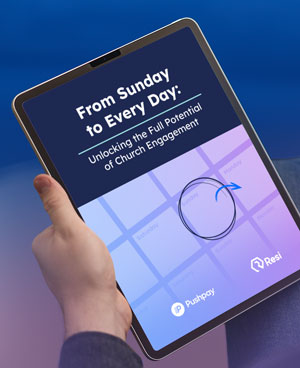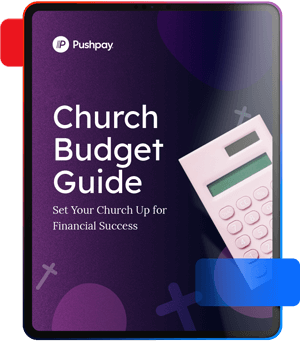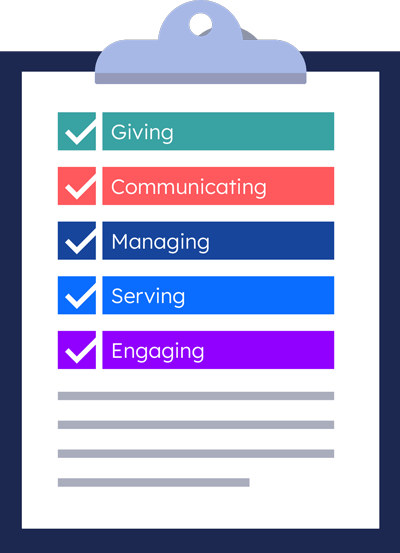Step 1: Define your church’s audience
Successful church marketing begins with understanding your church’s identity and the people you’re trying to reach. By anchoring your efforts in your mission and tailoring them to your audience, you can create a strong foundation for growth and meaningful connections.
Clarify your mission and vision
Your marketing plan should reflect your church’s purpose and values. Start by reviewing your mission statement and asking questions such as:
- What defines our church?
- What principles guide our ministry and outreach?
- How can we best serve our community and beyond?
Your mission and vision should influence everything from your website’s tone to the events you host. For instance, if your mission emphasizes serving young families, your marketing could highlight activities like children’s programs or parenting workshops.
Identify your target audience
Knowing who you’re trying to reach is as important as understanding your purpose. Analyze your current congregation’s demographics and think about the broader community you’d like to connect with. Consider questions like:
- What are the common life stages, interests, or needs of our members?
- Are there groups in our area we’re not engaging yet but want to?
- What challenges or spiritual needs are most pressing for them?
For example, a church in a growing neighborhood might focus on families, while a larger church might prioritize young professionals seeking community and opportunities to give back.
Create audience profiles
Once you’ve identified your audience, develop detailed profiles—or personas—to guide your messaging. These profiles help make sure your outreach resonates with the people you want to reach.
Each persona might include:
- Demographics: Age, marital status, family size, and occupation.
- Interests: Activities they value, such as Bible studies, youth programs, or service projects.
- Challenges: Questions they’re asking, obstacles to attending church, or spiritual needs.
- Preferred channels: How they engage—through email, social media, or other platforms.
For example:
- Sarah: A 35-year-old mom of two seeking engaging children’s programs and flexible service times.
- Michael: A 28-year-old professional looking for community and volunteer opportunities.
By aligning your marketing with your mission and audience insights, you’ll create an approach that truly connects. With this solid foundation, you can start building a practical plan using tools like content creation, local SEO, and online advertising to grow your reach.
Step 2: Build a strong online presence
A functional website, active social media profiles, and thoughtful digital content are key elements of a modern church marketing strategy.
Develop a user-friendly website
Your church website is often the first place people go to learn about your church. Make it welcoming and easy to navigate by including:
- Service times: Clearly display when and where services are held.
- Event information: Highlight upcoming activities, outreach programs, and special services.
- Online giving: Offer a simple and secure way for members and visitors to give.
- Contact details: Include an address, phone number, map, and a form for inquiries.
Your website should reflect your church’s unique identity with consistent design, colors, and messaging. A clean, professional website creates a positive first impression and helps people feel connected before they even visit.
Optimize for mobile devices
Many people search for churches or events on their phones, so it’s crucial that your site works seamlessly on mobile devices.
- Use a responsive design that adapts to any screen size.
- Simplify navigation to help users quickly find what they need.
- Test features like event registration or giving portals to make sure they’re mobile-friendly.
Prioritizing mobile optimization not only enhances the user experience but also improves your visibility in local search results.
Leverage social media
Social media platforms are powerful tools for engaging your congregation and reaching new audiences. Each platform has its strengths:
- Facebook: Great for sharing event details, live streaming services, and connecting with community groups.
- Instagram: Ideal for posting photos, inspirational messages, and behind-the-scenes glimpses of your ministry.
- YouTube: Useful for sharing sermons, event recaps, and testimonials.
Stay active and consistent on the platforms where your audience spends time. Social media can be a natural extension of your church’s voice and values, helping you connect in a more personal way.
Create a content calendar
A consistent online presence requires planning. A content calendar helps you stay organized and can help you be sure that your messaging aligns with your goals.
- Plan posts, videos, and blogs to promote events, services, and outreach efforts.
- Share content that reflects your mission, such as devotionals, sermon clips, or stories from your community.
- Coordinate your content with any online advertising campaigns to direct traffic to your website or events.
With a thoughtful content schedule, you can keep your community engaged and maintain momentum across your digital channels.
By focusing on a user-friendly website, mobile optimization, active social media, and well-planned content, your church will be well-positioned to grow and serve effectively.











